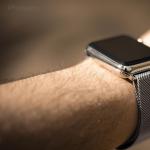Until what age does a child have elastic bones? Skeleton and its age features
If deviations in the formation of the baby’s skeletal system are detected in time during pregnancy, in most cases this can be safely corrected.
Where does the laying of a skeleton begin?
The skeleton begins to form almost from the first days of conception. A few days after fertilization, when the egg is already actively developing, it begins to produce ectoderm - the substance from which the baby’s bones will be formed in the future.Formation of the skeleton by trimesters
IN first During the trimester, the skeleton develops very actively. Already in the fifth week of pregnancy, the baby's vertebral arch forms. On the sixth, you can already distinguish the future arms, legs and head of the baby.During the period from the fifth to the ninth week of the period, the foundations of the spine and limbs are formed. The hip, knee, and elbow joints are formed.
By the end of the first trimester, fingers are already beginning to form, and jaw bones, eyes, ears, and a nose appear on the skull.
In second During the trimester, development continues: the arms and legs lengthen, and marigolds appear on the fingers. By the end of the trimester, the baby is moving his limbs, his skeletal system is almost ready for the process of bringing the baby into the world.
During third trimester, the baby's skeleton is formed, the head looks proportional, but the bones are still softer than those of an adult. The bones of the skull have not yet fused together; between them there is connective tissue - fontanelles. This is necessary so that the baby can pass head first through the birth canal without injury.

What is needed for the proper formation of the skeletal system?
To ensure that the baby’s skeletal system is formed correctly, future mommy should eat properly, the diet should contain foods containing calcium, magnesium and phosphorus.The expectant mother should refuse bad habits, support motor activity, to walk outside.
Fetal bone measurements help diagnose congenital diseases
Thanks to the data obtained during routine examinations, namely ultrasound diagnostics, it is possible to detect congenital diseases and changes in the structure of the skeleton in the baby.In particular, the absence of the nasal bone in the eleventh or twelfth week indicates Down syndrome.
What to do if a child develops incorrectly?
Timely detected deviations in the formation of the baby’s skeleton can be corrected using:- adjustments to mommy's diet;
- prescribing vitamin complexes to her;
- physical activity;
- stopping drinking alcohol and smoking.
When a pediatrician examines a newborn in the maternity hospital, he treats him very carefully and carefully and, among other indicators, checks whether the baby has pathologies in the development of joints and bones.
Features of the structure of bone tissue of a newborn baby
The skeleton of a newborn consists of 50% cartilaginous elements, which ensure the baby’s ability to grow. With age, cartilage tissue gradually transforms into bone, and this process, as a rule, continues until the age of 18, and its complete completion should occur only by 23-25 years.The bone tissue of a newborn baby is contained exclusively in tubular bones; the remaining elements of his skeleton contain only tiny points of ossification, which will increase as he grows.
This structure of the baby’s skeletal system makes it hyperplastic, thanks to which he was able to pass through the mother’s birth canal. At the same time, the skeleton of a newborn is vulnerable to such an extent that it can become deformed even with prolonged exposure to gravitational forces. For this reason, experts recommend changing the baby’s position from time to time and not carrying him in the same position in your arms. Newborn babies must be periodically transferred to different hands and turn from side to side. It is not recommended to put the baby on his feet too early; wait until he is physically mature for this. This also applies to early placement of a child in pillows. These experiments usually lead to deformation of the baby’s skeleton or individual bones.
How does a child's skeleton grow?
The bone tissue of a newborn baby is mainly a bundled coarse fibrous system, in the mass of which bone plates are randomly located in a small number. Unlike an adult, whose bones have cavities filled with yellow marrow, in infants these cavities are tiny and filled mainly with red bone marrow, through which the child’s skeleton is supplied with the substances necessary for further growth.Epiphyseal cartilage ensures the growth of the child's bones in length. The peripheral edge of this cartilage remains active until almost twenty-five years of age, thanks to which human bones are able to grow in length and people become taller. But the periosteum is responsible for the growth of bones in width and their thickening. In babies it is thick, dense and has great functional activity.
For a child, this feature of the periosteum has very favorable aspects, even if, God forbid, the baby has a fracture, this tissue remains undamaged, and the bone protected by it grows together very quickly and without pathological consequences for the child’s musculoskeletal system.
Articles on the topic |
| Victoria Nikitina 20.06 15:04 |
|
I would rather call the bones and joints of a newborn not fragile, but soft, plastic and even flexible. It is especially important to monitor the correct formation of the hip joints. Therefore, placing the little one on his tummy, holding him by the shins, try to bend his legs at the knees and spread them apart. His pose should resemble that of a frog. Your thighs should be almost parallel to the surface of the table. And the butt should go down, and not rise up, like a chicken’s. Symmetrically located dimples should be visible on the lower back. If you cannot easily perform this exercise, you should immediately consult with an orthopedist, take an x-ray of the hip joints and, possibly, put on stirrups. |
The human skeleton is a movable support of the body to which movable muscles are attached. Without skeletal bones, we would look like shapeless bags.
There are only 206 bones in the human body. The bones of the limbs, spine and pelvis are the support of the body. Skull bones, chest and pelvis are protected from damage internal organs. The bones are smooth and hard. But that's only on the outside. Inside they have a tubular structure and are filled with bone marrow.
Bones may break. Children have more plastic substance in their bones, and their fractures are rare. Old people have more mineral salts in their bones, they experience fractures more often, and their bones heal much more slowly than in children.
The skeleton, together with the muscles attached to it, participates in body movements. Many bones of the skeleton are movably connected through joints and ligaments. Thanks to the flexible joints of the bones, you can run and jump. Cartilage covers the surfaces of articulating bones at the joints, and in some places - in the ears, nose, between the sternum and ribs - it is part of the skeleton.
The spine consists of 7 cervical vertebrae, 12 thoracic vertebrae, 5 lumbar vertebrae, 5 fused sacral vertebrae and 3-4 coccygeal vertebrae. There are 32-33 vertebrae in the spine, and they are the most delicate in the entire body. They are connected to each other by ligaments and muscles that are attached to the bony processes of the vertebrae and are separated by intervertebral discs. The human spine has four curves that take some of the load off the vertebrae and allow us to stand upright and walk on two legs, and not on four, as almost all animals do. The curves also soften the shocks that occur when running.
The skull consists of 22 bones that are connected to each other and protect the brain from damage. All bones of the skull, with the exception of the lower jaw, are connected to each other using ossified sutures formed by dense tissue. The lower jaw is movable, allowing us to open and close our mouth. There are also 3 pairs of auditory ossicles in the skull.
The lower limb consists of the thigh, lower leg and foot. The joints that connect the bones of the lower limbs allow us to run and jump.
The skeleton of the upper limbs consists of the shoulder girdle and the skeleton of the arms. The shoulder girdle is the shoulder blades on the back side and the collarbone on the front, one end of which connects to the sternum - the bone that makes up the central part of the chest. The arm skeleton includes the humerus, forearm bones, and arm bones.
There is only one bone (hyoid), which is not connected to the general skeleton.
The crown is the place on the head where the three main bones of the skull meet: two parietal and one frontal. If a book is placed on the head of a person standing upright, the book will lie on the crown of the head. In young children, connective tissue in this area for a long time does not ossify and remains soft. Ossification ends in the second year of life.
To avoid curvature of the spine, it is necessary to constantly monitor your posture and avoid incorrect positions body or uncomfortable positions, for example, while doing homework or sleeping.
Spinal column
The main parts of the skeleton are the trunk skeleton, consisting of the spinal column and chest, the skeleton of the upper and lower extremities and the skeleton of the head - the skull.
The human spinal column is the axial part, the core of the skeleton, the upper end connecting to the skull, the lower end to the pelvic bones. The spinal column occupies 40% of the body length. It distinguishes the following sections: cervical, consisting of 7 vertebrae, thoracic - of 12 vertebrae, lumbar - of 5 vertebrae, sacral - of 5 vertebrae and coccygeal - of 4-5 vertebrae. In an adult, the sacral vertebrae fuse into one bone - the sacrum, and the coccygeal vertebrae - into the coccyx. The vertebral foramina of all vertebrae form the spinal canal, which houses the spinal cord. Muscles are attached to the processes of the vertebrae.
Between the vertebrae are intervertebral discs made of fibrocartilage; they promote mobility of the spinal column. With age, the height of the discs changes.
The growth of the spinal column occurs most intensively in the first 2 years of life. During the first year and a half of life, the growth of various parts of the spine is relatively uniform. Starting from 1.5 to 3 years, the growth of the cervical and upper thoracic vertebrae slows down and the growth of the lumbar region begins to increase faster, which is typical for the entire period of growth of the spine.
An increase in the rate of growth of the spine is observed at 7-9 years of age and during puberty, after which the increase in the growth of the spine is very small.
The structure of the tissues of the spinal column changes significantly with age. Ossification, which begins in the prenatal period, continues throughout childhood. Until the age of 14, only the middle parts of the vertebrae ossify. During puberty, new ossification points appear in the form of plates, which merge with the vertebral body after 20 years. The process of ossification of individual vertebrae is completed with the end of growth processes - by the age of 21-23. Late ossification of the spine determines its mobility and flexibility in childhood. The curvature of the spine, which is its characteristic feature, is formed in the process individual development child. In the very early age When the child begins to hold his head, a cervical curve appears, convexly directed forward (lordosis). By 6 months, when the child begins to sit, a thoracic curve forms with a convexity backward (kyphosis). When a child begins to stand and walk, lumbar lordosis forms. With the formation of lumbar lordosis, the center of gravity moves posteriorly, preventing the body from falling in an upright position.
By the age of one year, all the curves of the spine are already present. But the resulting curves are not fixed and disappear when the muscles relax. By the age of 7, there are already clearly defined cervical and thoracic curves, fixation of the lumbar curve occurs later - at 12-14 years.
The curves of the spinal column are a specific feature of humans and arose in connection with the vertical position of the body. Thanks to the bends, the spinal column is springy. Impacts and jolts during walking, running, jumping are weakened and attenuated, which protects the brain from concussions. Disorders of the curvature of the spinal column, which can arise as a result of improper seating of the child at the table and desk, lead to adverse consequences in his health.
Rib cage
The rib cage forms the bony base of the thoracic cavity. It protects the heart, lungs, liver and serves as an attachment point for the respiratory muscles and muscles of the upper limbs. The rib cage consists of the sternum, 12 pairs of ribs, connected at the back to the spinal column.
The shape of the chest changes significantly with age. In infancy, it is as if compressed from the sides, its anteroposterior size is larger than the transverse one (conical shape). In an adult, the transverse size predominates.
During the first year of life, the shape of the chest gradually changes, which is associated with changes in body position and center of gravity. The angle of the ribs relative to the spine decreases. According to the change in the chest, the volume of the lungs increases. Changing the position of the ribs helps to increase the movement of the chest and allows for more efficient breathing movements.
Further changes in the structure of the chest with age occur in the same direction. The conical shape of the chest lasts up to 3-4 years. By the age of 6, the relative sizes of the upper and lower parts of the chest characteristic of an adult are established, and the inclination of the ribs sharply increases. By the age of 12-13, the chest takes on the same shape as that of an adult.
The shape of the chest is affected physical exercise and landing. Under the influence of physical exercise, it can become wider and more voluminous. With prolonged incorrect sitting, when the child leans his chest against the edge of a table or desk lid, deformation of the chest can occur, which impairs the development of the heart, large vessels and lungs.
Limb skeleton
The skeleton of the upper limbs consists of the girdle of the upper limbs and the bones of the free limbs. The girdle of the upper limbs is formed by the shoulder blades and collarbones.
The skeleton of the free upper limb is formed by the humerus, movably connected to the scapula, the forearm, consisting of the radius and ulna, and the bones of the hand. The hand consists of small bones of the wrist, five long bones of the metacarpus and bones of the fingers.
The clavicles are stable bones that change little during ontogenesis. The shoulder blades ossify in postnatal ontogenesis, this process ends after 16-18 years. Ossification of free limbs begins in early childhood and ends at 18-20 years of age, and sometimes later.
The carpal bones of a newborn are just emerging and become clearly visible by the age of 7 years. From 10-12 years of age, gender differences in ossification processes appear. In boys they are late by 1 year. Ossification of the phalanges of the fingers is completed by 11 years of age, and of the wrist by 12 years of age. These data should be taken into account in the pedagogical process.
A completely undeveloped hand gets tired quickly, for children junior classes Fluent writing fails. At the same time, moderate and accessible movements contribute to the development of the hand. Game on musical instruments from an early age, it delays the process of ossification of the phalanges of the fingers, which leads to their lengthening (“musician’s fingers”).
The skeleton of the lower extremities consists of the pelvic girdle and the bones of the free lower extremities. The pelvic girdle is formed by the sacrum and the two pelvic bones fixedly connected to it. In a newborn, each pelvic bone consists of three bones (iliac, pubic and ischial), the fusion of which begins at 5-6 years of age and is completed by 17-18 years of age.
IN adolescence There is a gradual fusion of the sacral vertebrae into a single bone - the sacrum. In girls, when jumping sharply from a great height, when wearing shoes on high heels unfused pelvic bones can shift, which will lead to improper fusion and, as a consequence, narrowing of the exit from the pelvic cavity, which can subsequently make it very difficult for the fetus to pass during childbirth.
After 9 years, differences in the shape of the pelvis in boys and girls are noted: boys have a higher and narrower pelvis than girls.
The pelvic bones have round sockets into which the heads of the femurs fit. The skeleton of the free lower limb consists of the femur, two bones of the lower leg - the tibia and fibula, and the bones of the foot. The foot is formed by the bones of the tarsus, metatarsus and phalanges of the toes.
The human foot forms an arch that rests on the heel bone and the anterior ends of the metatarsal bones. There are longitudinal and transverse arches of the foot. The longitudinal, springy arch of the foot is unique to humans, and its formation is associated with upright walking. The weight of the body is evenly distributed over the arch of the foot, which is of great importance when carrying heavy loads. The arch acts like a spring, softening the shock of the body when walking.
In a newborn child, arching of the foot is not pronounced; it develops later, when the child begins to walk.
The arched arrangement of the bones of the foot is supported by a large number of strong articular ligaments. With prolonged standing and sitting, carrying heavy loads, or wearing narrow shoes, the ligaments are stretched, which leads to flattening of the foot.
Scull
Skull – skeleton of the head. There are two sections of the skull: the brain, or cranium, and the facial, or facial bones. The cerebral part of the skull is the seat of the brain.
In a newborn, the cranial bones are connected to each other by a soft connective tissue membrane. This membrane is especially large where several bones meet. These are fontanelles. The fontanelles are located at the corners of both parietal bones; There are unpaired frontal and occipital and paired anterior lateral and posterior lateral fontanelles. Thanks to the fontanelles, the bones of the roof of the skull can overlap each other with their edges. This is of great importance when the fetal head passes through the birth canal. Small fontanelles overgrow by 2-3 months, and the largest one, the frontal one, is easily palpable and overgrown only by one and a half years.
In children at an early age, the cerebral part of the skull is more developed than the facial part. The bones of the skull grow most rapidly during the first year of life. With age, especially from 13-14 years, the facial region grows more vigorously and begins to dominate over the brain. In a newborn, the volume of the cerebral part of the skull is 6 times larger than the facial part, and in an adult it is 2-2.5 times larger.
Head growth is observed at all stages of child development; it occurs most intensively during puberty. With age, the relationship between head height and height changes significantly. This ratio is used as one of the normative indicators characterizing the age of the child.
Has about 300-350 bones. As you grow older, some bones fuse and their number decreases. Bone tissue at the age of 25 years. During this period, the main growth of the body stops. The skeleton of a 25-year-old person consists of 206 bones, and this number remains unchanged until the end of life.
The human skeleton weighs only one-fifth of the total body weight.
Why do 90-odd more bones have more? The fact is that some bones are more similar in structure to cartilage. As cartilage grows, it becomes ossified, i.e. become ossified and their structure changes. During the process of ossification, bones fuse to form the human skeleton. This applies not only to the skeleton of the body. The newborn's skull is also divided into separate bones that allow the head to pass through the birth canal. During the first two years of life, the bones of the skull grow rapidly, becoming overgrown with connective tissue, although the sutures between the bones remain open for up to 20 years.
Some people may have a different number of bones than normal due to different growths, extra fingers or ribs.
Ensuring bone growth
Bones are made up of four types of tissue: periosteum, compact bone, cancellous bone, and bone marrow. The periosteum is the top layer of bone; it contains nerves and blood vessels that deliver nutrients to the bone tissue. This hard layer protects the bone marrow from damage. In order for bones to heal properly, the child must receive all the necessary micro- and macroelements and lead an active lifestyle. Physical exercise is beneficial. Fruits and vegetables and calcium-containing foods are essential for healthy bones. Sunlight provides the body with vitamin D, which helps the body absorb calcium. Without sunlight, bone tissue will not be healthy and strong.
It is important to prevent any bone injuries, especially fractures, in childhood. Parents should ensure that children wear protective equipment when riding a bicycle or rollerblading. When engaging in outdoor sports, it is also necessary to provide the child with the proper uniform, knee pads and other protective equipment, since in childhood the risk of injury is quite high. Children's bones grow quickly, so the healing process is faster than that of an adult. However, exactly until 20 years go by formation of a skeleton that will serve a person for the rest of his life.






